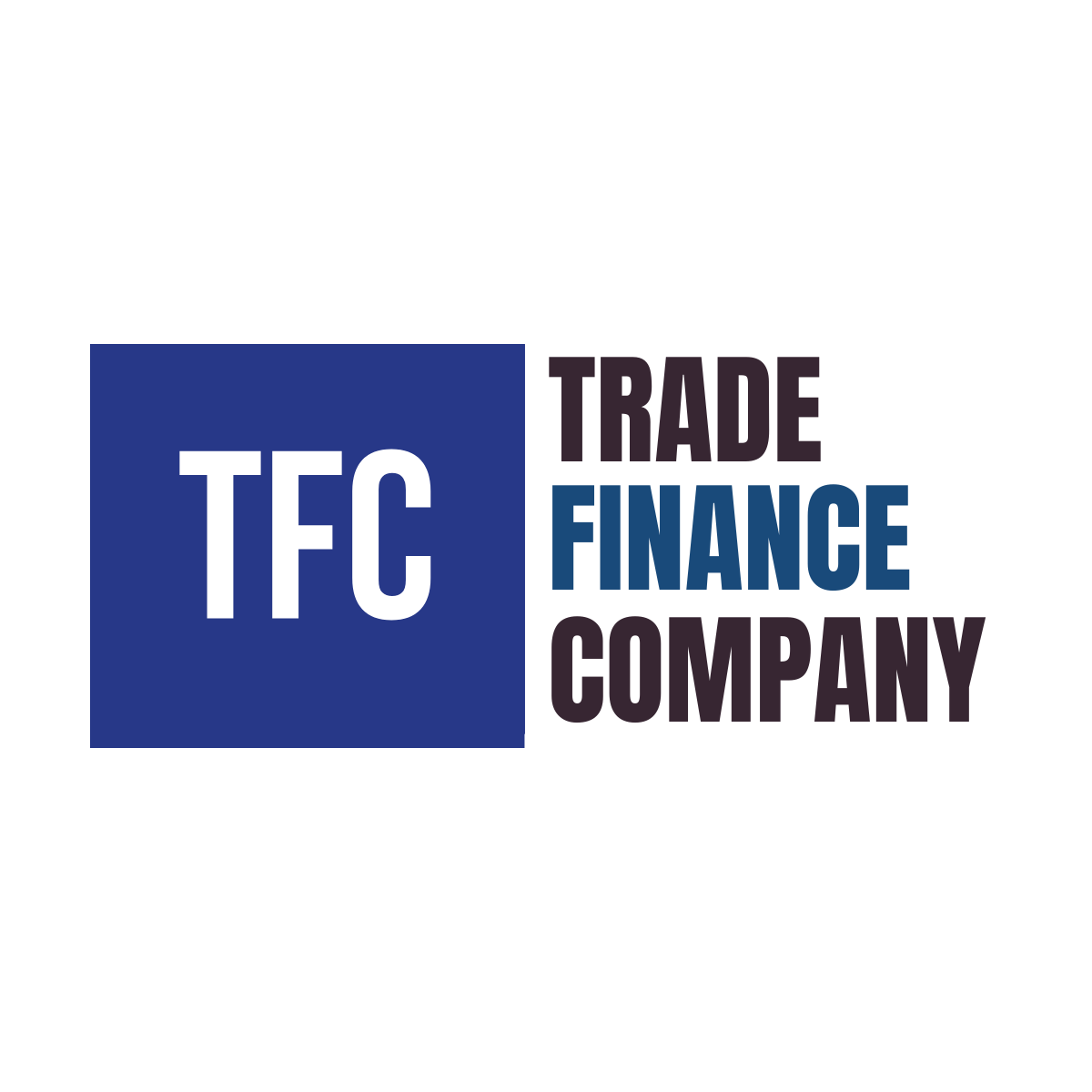Proof of Funds: Building Credibility and Confidence in Business Transaction

Proof of Funds: Building Credibility and Confidence in Business Transaction Credibility is everything. Whether you’re securing a real estate deal, entering into an international trade agreement, or negotiating a major contract, the ability to show proof of funds (POF) can make or break your opportunity. Proof of Funds isn’t just a piece of paper—it’s a powerful financial tool that establishes trust, minimizes risk, and accelerates deal-making. Image by freepik By the end of this article, you’ll discover how Proof of Funds can protect your interests, build instant credibility, and open doors to high-value opportunities that might otherwise be out of reach. Imagine this: you’ve worked for months preparing to close a multimillion-dollar deal. The suppliers are ready, the terms are set, and the only thing left is for you to prove you have the financial capability to follow through. Without solid proof, your credibility crumbles. Your partners hesitate, your competitors swoop in, and all your hard work evaporates. That one missing piece—Proof of Funds—could have secured your success. It’s not just about money; it’s about trust, respect, and confidence in your business. “Trust, once lost, is hard to regain. Proof of Funds ensures that trust is established from the very first handshake.“ — Trade Finance Expert In the next sections, you’ll learn what Proof of Funds really means, why it’s crucial in both local and international business, and how to leverage it effectively to stand out as a reliable partner in any transaction. Step 1: Understand What Proof of Funds Really Is A Proof of Funds document is an official bank statement or letter confirming that you or your company have the financial resources available to complete a transaction. Before using one, make sure it’s issued by a reputable financial institution. Avoid generic or vague documents—clarity and authenticity are key. This sets the stage for being taken seriously in high-stakes negotiations. Step 2: Always Keep Your Proof of Funds Updated Outdated POF letters raise red flags. A document that’s even a few weeks old can make a potential partner doubt your financial readiness. Request updated letters from your bank or provider whenever you’re preparing for a new deal. Staying proactive with this step signals your seriousness and professionalism. Step 3: Match the Proof of Funds to the Transaction If you’re working on a $10 million project, showing a POF for $1 million won’t inspire confidence. Ensure that the funds reflected in the document align with the transaction’s size. Tailor your POF presentation to the specific deal—it demonstrates preparedness and reliability to your counterparties. Step 4: Use Proof of Funds as a Negotiation Advantage Having a verified POF document can give you leverage when negotiating. Sellers and partners are more inclined to offer favorable terms when they know you have the resources ready to proceed. It removes doubts and allows you to shift the conversation from “if you can pay” to “how we can make this work best.” Step 5: Work With Trusted Providers and Advisors Scams and fake POF documents are unfortunately common in global trade. Protect your reputation by working only with established banks or trusted trade finance companies. Partnering with credible institutions not only guarantees authenticity but also strengthens your long-term business relationships. Step 6: Keep POF Confidential but Ready While it’s important to have Proof of Funds ready, avoid oversharing sensitive financial documents. Share them only with verified parties and through secure channels. Being cautious with financial disclosures shows both professionalism and strong risk management practices. Proof of Funds is more than paperwork—it’s your passport to credibility, trust, and successful business deals. Don’t let missing documentation hold back your opportunities. Email us at info@tradefinancecompany.co Call us at +65 3105 1500 Visit www.tradefinancecompany.com At Trade Finance Company, we help businesses like yours secure authentic, bank-issued Proof of Funds tailored to your needs.
Advance Payment Guarantees: Securing Upfront Payments in Risky Trade Deals

Advance Payment Guarantees: Securing Upfront Payments in Risky Trade Deals Upfront payments are often requested to finance production, purchase raw materials, or initiate large-scale projects. But how can buyers be sure they’ll receive the goods or services they’ve paid for in advance? And how do sellers reassure their clients while still securing much-needed working capital? The answer lies in Advance Payment Guarantees—a trusted financial tool that protects both parties, offering peace of mind in transactions involving upfront funds. Whether you’re an importer, exporter, contractor, or supplier, understanding how these guarantees work can mean the difference between a secured deal and a potential loss. Image by freepik By the end of this article, you’ll know how to confidently navigate risky trade deals that require upfront payments. You’ll understand how to protect your finances, build trust with international partners, and use advance payment guarantees as leverage to unlock growth—without compromising security. Picture this: You’re a supplier based in Asia who just secured a $1 million deal to deliver machinery to a South American client. The buyer agrees to pay 30% upfront, and the rest upon delivery. Excited, you begin production. But halfway through, an economic shift delays your buyer’s operations—and eventually, they cancel the deal. Now you’re stuck. You’ve spent the advance. There’s no delivery. The relationship is strained. And worse, your reputation takes a hit. Now imagine you’re the buyer in this situation. You’ve paid $300,000 upfront. Weeks pass. No updates. No shipment. You’re left in the dark, fearing you’ve been scammed. This is where an Advance Payment Guarantee becomes a game-changer. It protects the buyer from loss if the seller fails to deliver—and it helps the seller gain trust without giving up working capital. “Advance Payment Guarantees are not just financial instruments—they’re trust bridges that support deals before a single product is shipped.” — Elena Ramos, International Trade Risk Analyst Next, we’ll show you exactly how to use advance payment guarantees—step by step. You’ll learn when to request them, how to structure them, and how to ensure they’re enforceable across borders. These steps will help you safeguard your trade deals and enhance your financial strategy. Step 1: Identify When an Advance Payment Guarantee Is Needed Advance payment guarantees are typically requested in contracts where: ◘ Buyers must release funds before delivery begins ◘ Sellers require capital to initiate manufacturing or procurement ◘ Projects involve large sums or extended delivery timelines Ask yourself: If this deal falls apart, what will happen to the advance funds? If the answer is financial loss or reputational damage, then securing a guarantee is a wise move. Step 2: Partner with a Reputable Issuing Bank or Trade Finance Provider The credibility of the issuing institution matters. An advance payment guarantee is only valuable if it comes from a trusted source with global reach. Choose banks or trade finance firms that: ◘ Have a strong international presence ◘ Understand your industry ◘ Offer fast, transparent processing and support A reputable provider also ensures the guarantee is accepted by the counterparty’s bank, which can reduce delays and build trust faster. Step 3: Structure the Guarantee Clearly and Carefully An effective advance payment guarantee must clearly outline: ◘ The amount covered (typically equal to the advance payment) ◘ The triggering event for claiming the guarantee (e.g., non-performance, delay, default) ◘ The expiration date and any terms for extension ◘ The jurisdiction and legal framework under which disputes will be resolved Work with legal and financial advisors to ensure your guarantee is enforceable and aligned with international trade standards. Step 4: Negotiate the Right Terms for All Parties Guarantees should offer protection—but not become a burden. Discuss key terms with your buyer or seller: ◘ Will the guarantee be reduced or cancelled as deliveries are made? ◘ Will the buyer release the guarantee upon delivery of the first batch of goods? ◘ Who will pay the issuance fees—buyer, seller, or shared? Clarity on these points helps avoid confusion or tension later in the deal. Step 5: Monitor the Contract and Delivery Progress Once a guarantee is in place, don’t just file it away. Ongoing monitoring ensures: ◘ Delivery timelines are met ◘ Payment milestones are honored ◘ Early warnings of default or delay are detected Should issues arise, prompt action—including claim filing within the guarantee’s validity—is essential. Staying engaged ensures the guarantee serves its purpose effectively. Trade with confidence—every step of the way. At Trade Finance Company, we specialize in providing advance payment guarantees tailored to your unique business needs. Whether you’re securing your buyer’s trust or protecting your upfront investments, our experienced team can help you structure, issue, and manage guarantees with ease and professionalism. Email us at info@tradefinancecompany.co Call us at +65 3105 1500 Visit www.tradefinancecompany.com Don’t let uncertainty stall your growth. Secure your advance payments today with trusted financial backing!
Performance Guarantees: Ensuring Reliability and Trust in Business Contracts

Performance Guarantees: Ensuring Reliability and Trust in Business Contracts Trust is the cornerstone of every business relationship—especially in trade, construction, and high-stakes commercial contracts. But in a world full of variables—market fluctuations, supply chain interruptions, or contractor delays—trust alone isn’t always enough. This is where performance guarantees come into play. These financial instruments act as powerful tools that ensure accountability, mitigate risks, and foster confidence between parties. Whether you’re a buyer expecting timely delivery or a contractor promising project completion, performance guarantees serve as a reliable safeguard for both sides. Image by freepik By the time you finish reading this article, you’ll gain a solid understanding of how performance guarantees work, their role in high-value transactions, and how to secure them effectively. More importantly, you’ll learn how to use them as strategic tools to win contracts, reinforce your credibility, and protect your business interests globally. Imagine you’re a project owner who has just signed a $5 million contract with a foreign contractor to build a water treatment plant. You’ve invested time, capital, and trust in their ability to deliver. But three months in, construction halts. Delays pile up. You start receiving excuses instead of progress updates. Worse, you’ve already released advance payments, and your client is getting impatient. This is more than just a delay—it’s a blow to your business reputation and financial health. Now flip the perspective. You’re the contractor. You’ve invested in equipment, labor, and materials. You’ve complied with every requirement. But your client suddenly refuses payment, citing performance concerns you believe are unfounded. What protects you? In both cases, a performance guarantee is your safety net—ensuring either party performs or pays for failing to do so. It prevents distrust from spiraling into conflict and makes sure everyone follows through on their promises. “A performance guarantee is not just a financial instrument—it’s a promise of trust that drives global trade forward.” — Jonathan Banks, Trade Finance Expert In the next section, we’ll walk you through practical, easy-to-implement steps that explain how to evaluate, request, structure, and benefit from performance guarantees. Whether you’re a buyer, seller, project developer, or trade partner, you’ll walk away with actionable advice to protect your business from performance-related risks. Step 1: Understand When and Why You Need a Performance Guarantee The first step is recognizing when a performance guarantee is appropriate. These guarantees are ideal in contracts involving: ◘ Construction projects ◘ Engineering, procurement, and commissioning (EPC) contracts ◘ International supply contracts ◘ Government infrastructure projects ◘ Procurement of equipment with delivery obligations Ask yourself: What are the consequences if the other party does not perform as promised? If the risk of non-performance could lead to financial loss, reputational damage, or legal issues, a performance guarantee is not just recommended—it’s essential. Step 2: Choose the Right Financial Institution Your guarantee is only as strong as the institution backing it. Partner with a credible, internationally recognized bank or trade finance provider. Look for providers with: ◘ Global banking relationships ◘ Experience in trade finance instruments ◘ Competitive rates and transparent fee structures ◘ A reputation for honoring guarantees swiftly and fairly This is especially critical for cross-border contracts, where enforcement may require the financial institution’s reputation and network to ensure compliance. Step 3: Define Clear, Measurable Terms in the Guarantee Many disputes around performance guarantees arise due to vague contract terms. Work with your legal counsel to ensure that the guarantee clearly outlines: ◘ The scope of the obligations ◘ Performance milestones and deadlines ◘ Events that constitute a breach or failure ◘ Conditions under which the guarantee will be invoked ◘ Expiry dates and possible extensions The more precise your language, the easier it is to enforce the guarantee and avoid legal disputes. Step 4: Set the Right Guarantee Value A typical performance guarantee ranges from 5% to 20% of the total contract value. The percentage depends on: ◘ The size and complexity of the contract ◘ The perceived risk of non-performance ◘ The financial standing of the parties Negotiate an amount that reflects the seriousness of the contract without overburdening either party’s cash flow or credit lines. Over-insuring can tie up working capital unnecessarily, while under-insuring may leave you vulnerable. Step 5: Monitor Compliance and Keep Documentation Updated Don’t assume that once a performance guarantee is issued, your work is done. Active monitoring is essential: ◘ Set up performance reviews or inspections based on your contract milestones ◘ Maintain a direct line of communication with the issuing bank or trade finance provider ◘ Keep all documentation updated, especially if there are contract amendments or extensions If things start going off track, proactive communication and updated paperwork can help you invoke the guarantee promptly and minimize losses. Need help securing a performance guarantee for your next project or trade deal? You’ve come to the right place. At Trade Finance Company, we specialize in issuing reliable, internationally accepted performance guarantees that protect your business and strengthen your global trade credibility. Let us help you turn business risk into confidence—with the right financial instruments at your side. Email us at info@tradefinancecompany.co Call us at +65 3105 1500 Visit www.tradefinancecompany.co
The Importance of Due Diligence in Trade Finance

Trade Finance for Oil and Gas: Challenges and Opportunities The oil and gas industry is capital-intensive, politically sensitive, and globally interconnected—making trade finance not just important but essential. With complex transactions that span continents, high-value contracts, and fluctuating commodity prices, companies in this sector face unique financial and operational risks. Trade finance acts as a strategic enabler, helping firms manage liquidity, mitigate risk, and seize time-sensitive opportunities. Image by freepik This blog will help you uncover how trade finance can solve some of the most pressing issues faced by oil and gas traders, suppliers, and contractors. Whether you’re dealing with delayed payments, geopolitical disruptions, or large upfront capital requirements, you’ll discover actionable ways trade finance can reduce risk and support your global operations—so you can focus on growth and profitability. Imagine securing a multimillion-dollar crude oil contract, only to hit a roadblock because your supplier demands upfront payment and your cash is tied up in another project. Or being forced to walk away from a lucrative LNG deal because your buyer requests financial assurances you can’t provide fast enough. These aren’t just what-ifs—they’re daily realities for businesses in oil and gas. In an industry where timing is everything, trade finance solutions can mean the difference between winning and losing a deal. “In the volatile world of oil and gas, trade finance isn’t just a financial tool—it’s your ticket to compete in global energy markets.” — Rajiv Thakkar, Senior Energy Finance Advisor By continuing through this article, you’ll gain a solid understanding of the specific challenges trade finance addresses in the oil and gas sector. You’ll learn how to leverage instruments like letters of credit, performance guarantees, and supply chain finance to protect your operations, reduce your exposure to price volatility, and unlock global opportunities without putting strain on your working capital. 5 Steps to Leverage Trade Finance in Oil & Gas Step 1: Use Letters of Credit to Ensure Timely and Secure Transactions Letters of Credit (LCs) are essential in oil and gas, where deals often involve unknown parties and high-value transactions. LCs guarantee payment to the exporter upon meeting delivery conditions, offering security to both sides. How to implement: • Work with a bank to issue a confirmed LC before finalizing a deal. • Ensure all documentary conditions are clearly defined (e.g., bills of lading, inspection certificates). • Use LCs to negotiate better terms with international buyers or sellers. Step 2: Mitigate Risk with Performance and Advance Payment Guarantees Large-scale projects often require upfront payments or assurance of performance. Performance guarantees ensure the job gets done, while advance payment guarantees protect buyer prepayments. How to implement: • Use advance payment guarantees when suppliers require deposits. • Request performance guarantees from contractors to ensure timelines are met. • Clearly define deliverables and triggers in guarantee documents to avoid ambiguity. Step 3: Stabilize Cash Flow with Supply Chain Finance Given the long payment cycles in oil and gas, suppliers often struggle with cash flow. Supply chain finance allows them to get paid early without impacting your liquidity. How to implement: • Partner with a trade finance provider that offers supplier payment programs. • Extend your payables while letting your vendors receive immediate funds. • Use this tool to improve supplier loyalty and reduce operational risk. Step 4: Hedge Against Volatility with Structured Trade Finance Solutions Price swings in oil and gas markets can erode margins quickly. Structured trade finance solutions—like revolving credit facilities linked to inventory or receivables—can offer flexibility and stability. How to implement: • Work with your financier to tailor a structure that aligns with your cash cycle. • Use receivables or stored inventory as collateral. • Negotiate revolving terms to access funding repeatedly over time. Step 5: Navigate Sanctions and Compliance with Expert Support Cross-border oil and gas deals often involve jurisdictions with complex regulations and potential sanctions. Non-compliance can be disastrous. How to implement: • Engage a trade finance provider familiar with international compliance requirements. • Vet counterparties through sanctions screening and due diligence. • Request documentation and contracts to be reviewed for regulatory red flags. The oil and gas sector demands speed, security, and precision in every deal. At Trade Finance Company, we specialize in helping energy businesses thrive in complex global environments. From letters of credit to performance guarantees, we structure trade finance solutions that match your unique needs. Email: info@tradefinancecompany.co Call: +65 3105 1500 Contact us today and gain the financial confidence to power your next big oil and gas deal.
Trade Finance for Oil and Gas: Challenges and Opportunities

Trade Finance for Oil and Gas: Challenges and Opportunities The oil and gas industry is capital-intensive, politically sensitive, and globally interconnected—making trade finance not just important but essential. With complex transactions that span continents, high-value contracts, and fluctuating commodity prices, companies in this sector face unique financial and operational risks. Trade finance acts as a strategic enabler, helping firms manage liquidity, mitigate risk, and seize time-sensitive opportunities. Image by freepik This blog will help you uncover how trade finance can solve some of the most pressing issues faced by oil and gas traders, suppliers, and contractors. Whether you’re dealing with delayed payments, geopolitical disruptions, or large upfront capital requirements, you’ll discover actionable ways trade finance can reduce risk and support your global operations—so you can focus on growth and profitability. Imagine securing a multimillion-dollar crude oil contract, only to hit a roadblock because your supplier demands upfront payment and your cash is tied up in another project. Or being forced to walk away from a lucrative LNG deal because your buyer requests financial assurances you can’t provide fast enough. These aren’t just what-ifs—they’re daily realities for businesses in oil and gas. In an industry where timing is everything, trade finance solutions can mean the difference between winning and losing a deal. “In the volatile world of oil and gas, trade finance isn’t just a financial tool—it’s your ticket to compete in global energy markets.” — Rajiv Thakkar, Senior Energy Finance Advisor By continuing through this article, you’ll gain a solid understanding of the specific challenges trade finance addresses in the oil and gas sector. You’ll learn how to leverage instruments like letters of credit, performance guarantees, and supply chain finance to protect your operations, reduce your exposure to price volatility, and unlock global opportunities without putting strain on your working capital. 5 Steps to Leverage Trade Finance in Oil & Gas Step 1: Use Letters of Credit to Ensure Timely and Secure Transactions Letters of Credit (LCs) are essential in oil and gas, where deals often involve unknown parties and high-value transactions. LCs guarantee payment to the exporter upon meeting delivery conditions, offering security to both sides. How to implement: • Work with a bank to issue a confirmed LC before finalizing a deal. • Ensure all documentary conditions are clearly defined (e.g., bills of lading, inspection certificates). • Use LCs to negotiate better terms with international buyers or sellers. Step 2: Mitigate Risk with Performance and Advance Payment Guarantees Large-scale projects often require upfront payments or assurance of performance. Performance guarantees ensure the job gets done, while advance payment guarantees protect buyer prepayments. How to implement: • Use advance payment guarantees when suppliers require deposits. • Request performance guarantees from contractors to ensure timelines are met. • Clearly define deliverables and triggers in guarantee documents to avoid ambiguity. Step 3: Stabilize Cash Flow with Supply Chain Finance Given the long payment cycles in oil and gas, suppliers often struggle with cash flow. Supply chain finance allows them to get paid early without impacting your liquidity. How to implement: • Partner with a trade finance provider that offers supplier payment programs. • Extend your payables while letting your vendors receive immediate funds. • Use this tool to improve supplier loyalty and reduce operational risk. Step 4: Hedge Against Volatility with Structured Trade Finance Solutions Price swings in oil and gas markets can erode margins quickly. Structured trade finance solutions—like revolving credit facilities linked to inventory or receivables—can offer flexibility and stability. How to implement: • Work with your financier to tailor a structure that aligns with your cash cycle. • Use receivables or stored inventory as collateral. • Negotiate revolving terms to access funding repeatedly over time. Step 5: Navigate Sanctions and Compliance with Expert Support Cross-border oil and gas deals often involve jurisdictions with complex regulations and potential sanctions. Non-compliance can be disastrous. How to implement: • Engage a trade finance provider familiar with international compliance requirements. • Vet counterparties through sanctions screening and due diligence. • Request documentation and contracts to be reviewed for regulatory red flags. The oil and gas sector demands speed, security, and precision in every deal. At Trade Finance Company, we specialize in helping energy businesses thrive in complex global environments. From letters of credit to performance guarantees, we structure trade finance solutions that match your unique needs. Email: info@tradefinancecompany.co Call: +65 3105 1500 Contact us today and gain the financial confidence to power your next big oil and gas deal.
Bank Guarantees Explained: How They Protect and Strengthen Business Deals

How Trade Finance Supports Global Supply Chains The smooth functioning of global supply chains is critical for economic growth, production continuity, and customer satisfaction. Trade finance acts as the backbone of these supply chains—facilitating timely payments, ensuring trust among trading partners, and enabling companies to procure raw materials and deliver goods across continents without disrupting cash flow. Without trade finance, global supply chains would be more fragile, expensive, and unreliable. Image by Freepik By reading this blog, you’ll understand the essential role trade finance plays in strengthening and sustaining global supply chains. You’ll discover how it empowers businesses to reduce risk, maintain liquidity, and build stronger international relationships—all of which lead to better resilience and competitive advantage in today’s unpredictable global markets. Picture a factory in Asia that relies on raw materials from Europe and sells finished products in North America. A delay in payment from one client or a bottleneck in procurement could bring the entire production line to a halt. For thousands of businesses like this one, trade finance is more than a tool—it’s a lifeline. It brings the assurance that suppliers will be paid on time and buyers will receive goods as agreed, even when economic conditions are uncertain. “Trade finance is the grease that keeps the gears of global supply chains moving. Without it, trust would break down and trade would slow to a crawl.” — James Kim, International Supply Chain Strategist In the next sections, you’ll explore exactly how trade finance supports every link of the supply chain—from procurement to final delivery. You’ll learn about the tools and strategies businesses can adopt to keep inventory moving, avoid payment disputes, and protect working capital. Most importantly, you’ll gain actionable tips on how to use trade finance to stabilize your operations and expand your business reach without bearing unnecessary financial risk. 5 Key Steps to Strengthen Your Supply Chain with Trade Finance Step 1: Use Letters of Credit to Build Trust Across Borders Letters of Credit (LCs) are among the most reliable trade finance instruments that ensure payment upon compliance with agreed terms. This builds confidence between exporters and importers, even if they’ve never worked together before. How to implement: • Ask your bank or trade finance provider to issue or confirm an LC when entering into international contracts. • Make sure all terms (like shipping dates and document requirements) are clearly defined in the LC. • Work closely with your suppliers to ensure they understand and meet the documentary requirements for prompt payment. Step 2: Improve Cash Flow with Supply Chain Financing Supply chain finance (also known as reverse factoring) allows suppliers to receive early payments based on the creditworthiness of the buyer, freeing up much-needed cash without taking on debt. How to implement: • Talk to your finance partner about setting up a supply chain finance program for your key vendors. • Use it to help smaller or cash-strapped suppliers who might struggle with long payment terms. • Leverage early payment discounts while maintaining your own liquidity and payment schedule. Step 3: Use Performance Guarantees to Ensure Contract Fulfillment Performance guarantees reassure the buyer that the supplier will meet the contract terms. If not, the guarantee compensates the buyer, minimizing risk and avoiding disruption. How to implement: • Request or issue a performance guarantee before large or long-term trade contracts. • Use these guarantees to secure better contract terms and avoid legal disputes in case of non-performance. • Choose a financial institution with a solid reputation for issuing enforceable guarantees worldwide. Step 4: Implement Advance Payment Guarantees for Confidence in Prepayments In some cases, buyers are asked to pay in advance for raw materials or production costs. Advance payment guarantees protect buyers by ensuring that if the seller fails to deliver, the advance will be refunded. How to implement: • When paying suppliers upfront, always request an advance payment guarantee. • Include specific milestones and refund triggers to ensure accountability. • Keep a copy of the guarantee readily accessible in case of any delivery issues. Step 5: Secure Inventory with Stock Finance Solutions Stock finance (inventory financing) helps you hold and manage inventory without putting strain on your cash flow. This is especially helpful when goods are in transit or stored in warehouses before being sold. How to implement: • Partner with a trade finance company that offers stock financing to free up working capital. • Use inventory reports to show the value of stock and qualify for financing. • Monitor the turnover rate and storage costs to ensure financing stays cost-effective. A strong supply chain starts with strong financial support. Whether you’re managing complex imports, looking to support suppliers, or want to improve cash flow, Trade Finance Company can help. Let us tailor the right trade finance solutions to your needs and keep your supply chain moving—no matter where you do business. Email: info@tradefinancecompany.co Call: +65 3105 1500 Need advice on letters of credit, inventory finance, or supplier payment options? Contact us today and speak with a trade finance expert. → Contact us today to explore your trade finance options and grow globally with confidence!
Case Study: $4.7M in Construction Guarantees for a Major Wastewater Treatment Project in Central Asia Issued in Just 7 Days

Case Study: $4.7M in Construction Guarantees for a Major Wastewater Treatment Project in Central Asia Issued in Just 7 Days Learn how Trade Finance Company delivered an Advance Payment Guarantee and a Performance Guarantee, totaling over $4.74 million to support a transformative infrastructure project in Central Asia within just 7 days. Request Your Estimates Today! Abstract This case study explores how Trade Finance Company facilitated two critical financial instruments—a $3.16M Advance Payment Guarantee and a $1.58M Performance Guarantee—to support a major construction contract in Central Asia. The guarantees were instrumental in enabling a high-impact infrastructure project: the construction of a state-of-the-art Wastewater Treatment Plant (WWTP) in Central Asia. This case demonstrates how tailored trade finance solutions can drive progress on essential public works while minimizing project and payment risk. By delivering tailored guarantees quickly and securely, we enabled the client to maintain credibility with their project stakeholders and meet international compliance standards. Introduction In large-scale infrastructure projects, construction companies often need to provide financial guarantees to demonstrate reliability and commitment. These guarantees help satisfy the employer’s risk management needs, especially when substantial prepayments or performance benchmarks are involved. Infrastructure development projects, especially those in the public utility sector, require not just capital and expertise but also robust financial backing to ensure project security and stakeholder confidence. A client from Central Asia reached out to Trade Finance Company to provide essential financial guarantees required under a significant public works contract. With construction schedules and public services on the line, speed and precision were critical. The guarantees were required for the successful execution of a major public infrastructure project: the Construction of a Wastewater Treatment Plant (WWTP) in Central Asia. The existing facility in the area is currently non-operational. This project aims to transform the outdated site into a modern WWTP capable of processing up to 20,000 m³ of wastewater per day, ultimately delivering centralized, reliable wastewater services to an estimated population of 100,000 residents in the region. Time was critical: the project schedule demanded prompt issuance of the instruments to prevent delays in mobilization and execution. Challenges The client faced several key challenges: Compliance with Contractual Terms: The construction contract required both an advance payment guarantee and a performance guarantee to be issued before mobilization could begin. Time Constraints: Issuance needed to occur within a tight timeframe to align with funding and operational deadlines. Multiple Draft Revisions: Both guarantees required multiple rounds of revisions to meet both employer and local compliance standards. Coordination of Dual Instruments: Issuing two separate instruments in parallel required close coordination and real-time communication between all stakeholders. Solutions To meet the client’s requirements, Trade Finance Company developed a three-pronged solution: Instrument Structuring: We customized an Advance Payment Guarantee of $3,160,402.94 and a Performance Guarantee of $1,580,201.47, ensuring both complied with international banking norms and the specific requirements of the project employer. Rapid Coordination: By working in tandem with Asia Nexus and legal counsel, we aligned the drafts with all regulatory and contractual obligations across several rounds of revision. Secure Issuance Framework: All instruments were processed through established banking channels, ensuring transparency, traceability, and full compliance. Solution Implementation The process began with initial drafts provided by the beneficiary bank, which kicked off a collaborative review and revision period. Between April 10 and May 20, 2025, multiple revised drafts of both the Advance Payment Guarantee and the Performance Guarantee were exchanged to ensure full alignment with the client’s contract terms and the employer’s requirements. On May 22, 2025, the signed drafts were received, followed by proof of the pre-issuance fee on May 23, with payment clearing into the account by May 27. The final documents were then sent for issuance on May 29, and by May 30, 2025, both relayed copies of the financial guarantees were successfully delivered to the client — completing the entire transaction within just 7 days from payment receipt. Results By the end of the 7-day execution period, the client had in hand:• A $3,160,402.94 Advance Payment Guarantee• A $1,580,201.47 Performance GuaranteeThese results delivered immediate and long-term benefits: Transaction Completed in 7 Days: Both guarantees were issued within a week of receiving payment, enabling the project to proceed on schedule. Full Compliance Achieved: Instruments were accepted by the employer without further modification, reflecting the accuracy and quality of documentation. Support for a High-Impact Public Project: The client secured the necessary financial backing to begin construction on a facility that will improve sanitation infrastructure for over 100,000 people. Strengthened Credibility: The timely issuance and compliance of the guarantees strengthened the client’s position with the employer and enhanced their profile for future tenders. Discussion This case demonstrates how well-coordinated financial structuring and expertise in trade instruments can make or break complex project timelines. Whether for public infrastructure or private development, guarantees like these serve as vital tools for securing trust, managing risk, and enabling project financing. Trade Finance Company’s ability to issue two large instruments under tight deadlines showcases our commitment to helping clients deliver results — even under pressure. Conclusion This case highlights Trade Finance Company’s role as a trusted partner in facilitating complex, high-stakes infrastructure projects. By delivering both an Advance Payment Guarantee and a Performance Guarantee within just 7 days, we empowered our client to meet contractual obligations and initiate a transformative wastewater treatment project in Central Asia. Our expertise, speed, and attention to detail ensured the success of this mission-critical transaction. Get In touch! Are you facing challenges in securing financial instruments for your trade transactions? Let Trade Finance Company design a solution that meets your specific needs. Contact us today to unlock new opportunities in global trade. Get In touch! Need performance or advance guarantees for your next project? Contact Trade Finance Company today! Let us help you deliver with speed, security, and confidence.
Case Study: $4.74M in Construction Guarantees Issued in Just 7 Days

Case Study: $4.74M in Construction Guarantees Issued in Just 7 Days Learn how Trade Finance Company delivered an Advance Payment Guarantee and a Performance Guarantee, totaling over $4.74 million, to support a high-value construction project in Central Asia — all within 7 days of payment confirmation. Request Your Estimates Today! Abstract This case study highlights how Trade Finance Company issued two essential financial instruments — a $3.16M Advance Payment Guarantee and a $1.58M Performance Guarantee — for a client in Central Asia to support a major construction contract. These guarantees were processed, issued, and delivered within just 7 days from payment receipt, ensuring the client could meet contractual obligations and move forward with the project on time. By delivering tailored guarantees quickly and securely, we enabled the client to maintain credibility with their project stakeholders and meet international compliance standards. Introduction In large-scale infrastructure projects, construction companies often need to provide financial guarantees to demonstrate reliability and commitment. These guarantees help satisfy the employer’s risk management needs, especially when substantial prepayments or performance benchmarks are involved. A client from Central Asia approached Trade Finance Company with the urgent requirement for both an Advance Payment Guarantee and a Performance Guarantee, aligned with a multimillion-dollar construction contract. Time was critical: the project schedule demanded prompt issuance of the instruments to prevent delays in mobilization and execution. Challenges The client faced several key challenges: Dual Instrument Requirement: Both an Advance Payment Guarantee and a Performance Guarantee were required — each with specific wording and conditions tied to the contract. Tight Timelines: Delays in delivering the guarantees could jeopardize project timelines and funding disbursements. Strict Compliance Requirements: The wording of the guarantees had to meet employer standards and pass legal review, necessitating multiple revisions. Solutions To meet these demands, Trade Finance Company implemented a streamlined, collaborative, and compliant process: Customized Drafting & Negotiation: We worked closely with the client and their legal team to prepare and revise the guarantee drafts until final acceptance. Parallel Structuring: Both instruments were developed concurrently, ensuring no time was lost waiting for separate reviews. Speed & Accuracy: Once payment was confirmed, we prioritized execution and issuance to ensure both guarantees were delivered in just 7 days. Solution Implementation The process began with initial drafts provided by Asia Nexus, which kicked off a collaborative review and revision period. Between April 10 and May 20, 2025, multiple revised drafts of both the Advance Payment Guarantee and the Performance Guarantee were exchanged to ensure full alignment with the client’s contract terms and the employer’s requirements. On May 22, 2025, the signed drafts were received, followed by proof of the pre-issuance fee on May 23, with payment clearing into the account by May 27. The final documents were then sent for issuance on May 29, and by May 30, 2025, both relayed copies of the financial guarantees were successfully delivered to the client — completing the entire transaction within just 7 days from payment receipt. Results By the end of the 7-day execution period, the client had in hand: • A $3,160,402.94 Advance Payment Guarantee • A $1,580,201.47 Performance Guarantee These results delivered immediate and long-term benefits: On-Time Project Mobilization: The guarantees enabled the client to unlock prepayment funds and start work without delay. Compliance and Trust: Employer requirements were fully met, ensuring continued trust and credibility. Efficient Execution: Trade Finance Company demonstrated agility and professionalism, handling both instruments simultaneously without compromise. Discussion This case demonstrates how well-coordinated financial structuring and expertise in trade instruments can make or break complex project timelines. Whether for public infrastructure or private development, guarantees like these serve as vital tools for securing trust, managing risk, and enabling project financing. Trade Finance Company’s ability to issue two large instruments under tight deadlines showcases our commitment to helping clients deliver results — even under pressure. Conclusion The successful delivery of over $4.74 million in construction guarantees in just 7 days reinforces Trade Finance Company’s position as a trusted partner for businesses engaged in high-value contracts. Get In touch! Need performance or advance guarantees for your next project? Contact Trade Finance Company today! Let us help you deliver with speed, security, and confidence.
How Trade Finance Supports Global Supply Chains

How Trade Finance Supports Global Supply Chains The smooth functioning of global supply chains is critical for economic growth, production continuity, and customer satisfaction. Trade finance acts as the backbone of these supply chains—facilitating timely payments, ensuring trust among trading partners, and enabling companies to procure raw materials and deliver goods across continents without disrupting cash flow. Without trade finance, global supply chains would be more fragile, expensive, and unreliable. Image by Freepik By reading this blog, you’ll understand the essential role trade finance plays in strengthening and sustaining global supply chains. You’ll discover how it empowers businesses to reduce risk, maintain liquidity, and build stronger international relationships—all of which lead to better resilience and competitive advantage in today’s unpredictable global markets. Picture a factory in Asia that relies on raw materials from Europe and sells finished products in North America. A delay in payment from one client or a bottleneck in procurement could bring the entire production line to a halt. For thousands of businesses like this one, trade finance is more than a tool—it’s a lifeline. It brings the assurance that suppliers will be paid on time and buyers will receive goods as agreed, even when economic conditions are uncertain. “Trade finance is the grease that keeps the gears of global supply chains moving. Without it, trust would break down and trade would slow to a crawl.” — James Kim, International Supply Chain Strategist In the next sections, you’ll explore exactly how trade finance supports every link of the supply chain—from procurement to final delivery. You’ll learn about the tools and strategies businesses can adopt to keep inventory moving, avoid payment disputes, and protect working capital. Most importantly, you’ll gain actionable tips on how to use trade finance to stabilize your operations and expand your business reach without bearing unnecessary financial risk. 5 Key Steps to Strengthen Your Supply Chain with Trade Finance Step 1: Use Letters of Credit to Build Trust Across Borders Letters of Credit (LCs) are among the most reliable trade finance instruments that ensure payment upon compliance with agreed terms. This builds confidence between exporters and importers, even if they’ve never worked together before. How to implement: • Ask your bank or trade finance provider to issue or confirm an LC when entering into international contracts. • Make sure all terms (like shipping dates and document requirements) are clearly defined in the LC. • Work closely with your suppliers to ensure they understand and meet the documentary requirements for prompt payment. Step 2: Improve Cash Flow with Supply Chain Financing Supply chain finance (also known as reverse factoring) allows suppliers to receive early payments based on the creditworthiness of the buyer, freeing up much-needed cash without taking on debt. How to implement: • Talk to your finance partner about setting up a supply chain finance program for your key vendors. • Use it to help smaller or cash-strapped suppliers who might struggle with long payment terms. • Leverage early payment discounts while maintaining your own liquidity and payment schedule. Step 3: Use Performance Guarantees to Ensure Contract Fulfillment Performance guarantees reassure the buyer that the supplier will meet the contract terms. If not, the guarantee compensates the buyer, minimizing risk and avoiding disruption. How to implement: • Request or issue a performance guarantee before large or long-term trade contracts. • Use these guarantees to secure better contract terms and avoid legal disputes in case of non-performance. • Choose a financial institution with a solid reputation for issuing enforceable guarantees worldwide. Step 4: Implement Advance Payment Guarantees for Confidence in Prepayments In some cases, buyers are asked to pay in advance for raw materials or production costs. Advance payment guarantees protect buyers by ensuring that if the seller fails to deliver, the advance will be refunded. How to implement: • When paying suppliers upfront, always request an advance payment guarantee. • Include specific milestones and refund triggers to ensure accountability. • Keep a copy of the guarantee readily accessible in case of any delivery issues. Step 5: Secure Inventory with Stock Finance Solutions Stock finance (inventory financing) helps you hold and manage inventory without putting strain on your cash flow. This is especially helpful when goods are in transit or stored in warehouses before being sold. How to implement: • Partner with a trade finance company that offers stock financing to free up working capital. • Use inventory reports to show the value of stock and qualify for financing. • Monitor the turnover rate and storage costs to ensure financing stays cost-effective. A strong supply chain starts with strong financial support. Whether you’re managing complex imports, looking to support suppliers, or want to improve cash flow, Trade Finance Company can help. Let us tailor the right trade finance solutions to your needs and keep your supply chain moving—no matter where you do business. Email: info@tradefinancecompany.co Call: +65 3105 1500 Need advice on letters of credit, inventory finance, or supplier payment options? Contact us today and speak with a trade finance expert. → Contact us today to explore your trade finance options and grow globally with confidence!
Standby Letters of Credit: The Ultimate Business Safety Net for Trade Transactions

Standby Letters of Credit: The Ultimate Business Safety Net for Trade Transactions Trust isn’t just a virtue in international trade—it’s the foundation that holds transactions together. Standby Letters of Credit (SBLCs) have become essential financial instruments, offering a dependable means to guarantee both payment and performance in cross-border dealings. By acting as a financial safety net, SBLCs significantly reduce risk and foster stronger, more confident relationships between global buyers and sellers. Image by rawpixel.com on Freepik In this blog, you’ll discover how Standby Letters of Credit can protect your business from financial loss, ensure smooth international transactions, and position your company as a trustworthy player in global trade. If you’re looking for a way to reduce risk and build solid trade relationships, this article is for you. Imagine this: You’ve just secured a major international contract. The opportunity is huge, but you’re wary—what if the other party doesn’t follow through? What if payment is delayed or never arrives? These fears are real, especially for growing businesses. Standby Letters of Credit provide peace of mind. They act like a financial safety net, assuring you that you won’t be left empty-handed. “A Standby Letter of Credit is not just a promise—it’s a financial shield. It ensures that trust, even across oceans, has backing.” — Global Trade Expert, Carla Mendoza By the end of this blog, you’ll gain a clear understanding of what Standby Letters of Credit are, how they work in real trade transactions, and how to practically incorporate them into your business strategy. You’ll also learn step-by-step tips to effectively leverage SBLCs for maximum protection and business growth. Whether you’re a new exporter or a seasoned trader, this guide will empower you with actionable knowledge to safeguard your interests. 5 Key Steps to Leverage SBLCs Effectively Step 1: Understand the Types of SBLCs and Choose the Right One There are two main types of SBLCs—financial and performance. A financial SBLC ensures payment in case of non-payment by the buyer, while a performance SBLC guarantees the fulfillment of a contract’s terms. How to implement: • Analyze your business needs: Are you more concerned about getting paid or ensuring service delivery? • Consult your trade finance advisor or banker to determine the appropriate SBLC type. • Always define the SBLC terms clearly in the contract to avoid misunderstandings later. Step 2: Work with a Reputable Bank or Trade Finance Partner Not all financial institutions provide efficient SBLC services. Choosing the right partner can make or break your experience. How to implement: • Look for institutions experienced in international trade finance. • Check their turnaround time, fees, global network, and track record. • Ensure the bank is familiar with SWIFT communications and can issue or confirm SBLCs efficiently. Step 3: Clearly Define Conditions and Documentation Ambiguities in SBLC terms can lead to disputes or payment refusal. The issuing bank will only release funds if the beneficiary complies exactly with the stipulated terms. How to implement: • Work with legal and finance experts to draft precise, unambiguous SBLC terms. • Define performance metrics, timelines, shipping documentation, and any required certifications. • Keep all documents in a well-organized system for swift presentation upon need. Step 4: Use SBLCs to Strengthen Negotiation Power An SBLC provides assurance not just for you, but also for your counterpart. It can help you negotiate better prices, longer payment terms, or gain access to more suppliers. How to implement: • Mention in your negotiations that your obligations are backed by an SBLC. • Use it to reassure partners who may otherwise hesitate due to distance or unfamiliarity. • Emphasize that the SBLC ensures a win-win situation—both parties are protected. Step 5: Regularly Review and Renew Your SBLC Strategy Markets evolve, and so do risks. The way you use SBLCs should adapt to your growing business needs and external trade conditions. How to implement: • Conduct periodic reviews of all SBLCs in place—expiration dates, conditions, and bank reliability. • Update your staff on SBLC handling and compliance. • Ask your financial advisor how to integrate SBLCs with other instruments like bank guarantees or letters of credit for broader protection. Trade finance has come a long way—and your business can be part of its next evolution. Whether you’re navigating your first international transaction or expanding across borders, Trade Finance Company is here to guide you. We offer personalized support and robust financial instruments that help you trade with confidence. Call: +1 858 848 0909 Email: info@tradefinancecompany.co Visit: www.tradefinancecompany.co → Contact us today to explore your trade finance options and grow globally with confidence!

